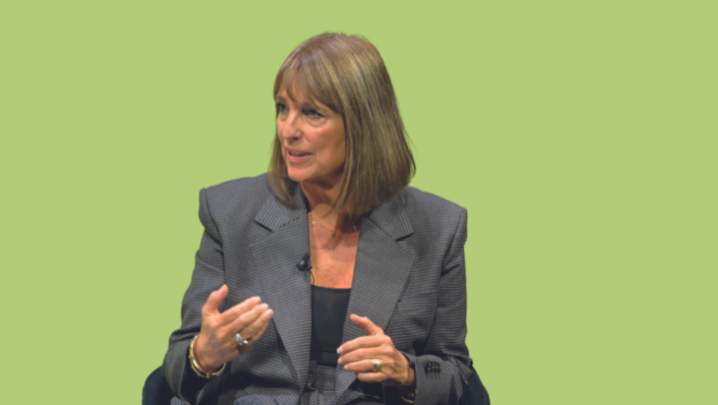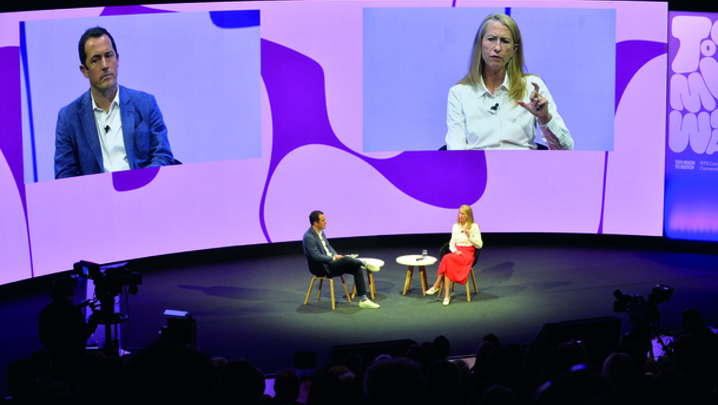The RTS went behind the scenes to discover how ITV’s I’m a Celebrity… Get Me Out of Here! became a global reality hit
Snakes chewing through camera cables, raging bush fires and thunderstorms knocking out feeds. It seems the challenges of filming a TV show in the jungle are as tricky as any Bushtucker Trial.
Sourcing 450,000 cockroaches and convincing celebrities that there really won’t be any secret pizza deliveries are some of the tasks undertaken by the producers of ITV’s I’m a Celebrity… Get Me Out of Here!
A panel of key creatives from the flagship entertainment show enthralled an RTS audience with behind-the-scenes secrets at a Midlands Centre “Anatomy of a hit” event in Birmingham. I’m a Celebrity…, due to return this year for its 20th series, is one of ITV’s most successful shows and recently won the Bruce Forsyth Entertainment Award at the National Television Awards.
As co-creator and executive producer, Richard Cowles, said: “There aren’t many shows that deliver 10 million viewers every night. It’s become an institution. I like the fact that someone called it the Wimbledon of entertainment.”
To date, 221 people have joined the jungle club. These range from the first winner, Tony Blackburn, to current queen Jacqueline Jossa, via such surprisingly entertaining camp mates as Paul Burrell, Carol Thatcher, Martina Navratilova and George Takei.
They’ve all hunkered down for up to three weeks in the Australian rainforest, giving up creature comforts and undertaking eye-catching challenges, from surviving on a limited diet of rice and beans to skydiving.
The home-grown reality survival format has been sold to 10 countries, including Germany, Sweden, India, Hungary and the US. All but the first of the UK series have been shot on the same set in Australia, based in Murwillumbah, New South Wales, close to the Queensland border. The camp is on private land located on the edge of a national park. An old banana plantation provides the production site.
Getting the show on air involves a massive logistical operation. There are about 600, mostly Australian, crew members, including 136 from the UK. In excess of 100 cameras capture the action.
Cowles said: “I’m a Celebrity… is like the circus coming to town. It’s a huge thing every year, which really helps the local economy.
“It’s scary in there – a real jungle, full of spiders and snakes, and a tough place to live. I’ll always remember standing in the camp 10 minutes before the very first celebrity arrived.
“I’d just had the talk from Medic Bob about everything that could kill you, and I spotted a deadly taipan snake. All I could think of was Bob telling me that they chase you!”
Snakes aside, Cowles recalled how he was originally concerned whether he could make the show work. Even its famous presenters, Anthony McPartlin and Declan Donnelly – now the show’s biggest fans – couldn’t quite comprehend the format.
He revealed: “It was quite a hard sell to Ant and Dec. They didn’t understand the title, they thought it was way too long and ridiculous. But they said they’d be annoyed if they saw anyone else presenting it.
“We didn’t know we could pull it off, but TV is all about blagging. It was a bit of a gamble and ITV was willing to take a few risks. We realised that it worked from the first series, although it really took off in series three, with Katie Price and Peter Andre.”
Preparing for I’m a Celebrity… is almost a year-long process. Micky Van Praagh, head of on-screen talent at ITV Studios, is already thinking of celebrities she would like to cast for the next series, due later this year.
"Every year, we rip it apart to look at what worked and what didn’t"
Meanwhile, producer Chris Mannion and his team are devising new trials. For inspiration, they visit escape rooms as well as adapting games from shows such as The Cube. Each series now has a theme: in 2018, they built a coliseum and, last year, a Wild West town.
Mannion revealed that there is a thorough testing process, with producers doing everything they ask of the celebrities. Closer to transmission, they hire local Australians to live in the camp for three days. They eat and sleep in the same conditions that the celebrities will and rehearse trials to make sure everything is in working order.
Recently, 150 people had to be evacuated from the set, where the crew was doing a dry run with stand-ins, as a bush fire came dangerously close. Line producer Pui-Man Li recalled: “It was travelling 1km every 20 minutes. I was one of the last people off the site, and it was scary.
“Storm damage is also a big thing. Snake Rock was wiped out a couple of years ago. We had to rebuild it. We’ve also had a satellite knocked out and snakes chewing through cables.”
The snakes used in trials are pampered, though. Cowles said that they are kept in air-conditioned trucks. “And if we use toads, we give them floating platforms. It’s extraordinary what happens behind the scenes with the animal handlers who look after the creatures’ welfare. And we run all the trials by New South Wales RSPCA.”
Making the show is a 24-hour task. When the live show goes off air at breakfast time in Australia, a team of producers gets to work watching and logging everything in camp. As soon as something interesting happens, the footage is sent to be edited immediately.
At 7pm, the first executive producer arrives at the production site to start locking in the running order. Cowles starts at 11pm and Ant and Dec clock on at 3am. They watch the VTs, followed by a script meeting and then a rehearsal before the show goes live at 7am.
Cowles, who admitted suffering from a rat phobia that means he avoids going near any rodent trials, said: “Ant and Dec bring everything to the show. It’s amazing to watch them create the comedy.
“Sometimes, they don’t even talk, they just look at each other and know what they’re going to do. They are constantly trying to make it better and will change something just before transmission. They make it look so easy, but they work really hard.”
Of course, the mix of celebrities is also crucial to the show’s success. Van Praagh said: “I’m looking for impressive names to get people excited, but we also want surprising characters, such as [presenter and actor] Joel Dommett in 2016. He wasn’t known to a mainstream ITV audience but, within a couple of days, everyone loved him. No one thought Harry Redknapp [the football manager and winner in 2018] would be so much fun. We want people who are interesting, with lots of anecdotes, and who are interested in each other.”
Cowles, who acknowledged he had never been able to predict the winner, added: “The biggest crime is to be boring. Don’t sleep all the time. The public vote for people who go on a journey and overcome their fears. They always say they aren’t going to eat this or do that, but they almost always do.
“Apart from [Corrie star] Helen Flanagan [in 2012]. That was most annoying, when you’ve spent a lot of time and money on trials and then the celebrity refuses to do it.”
He concluded: “We work hard to keep the show at the top of its game. Every year, we rip it apart to look at what worked and what didn’t. We don’t take it for granted that people will always watch.”
No doubt, but millions will be eager to tune in again in November in the expectation of seeing the next batch of camp mates chew through fish eyes and be buried beneath rats.
Report by Roz Laws. ‘Anatomy of a hit: I’m a Celebrity...’ was held at the IET in Birmingham on 11 March. It was chaired by Heart FM’s Kevin Hughes and produced by Jayne Greene for RTS Midlands.




